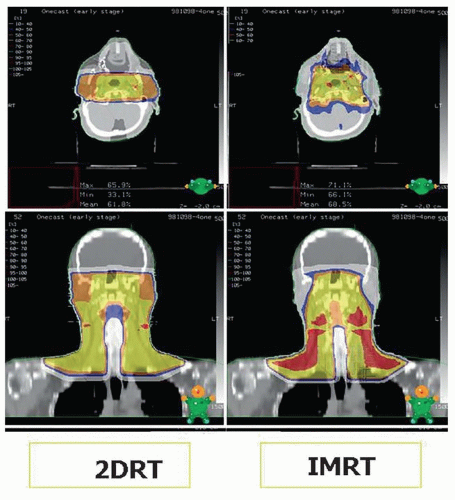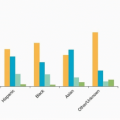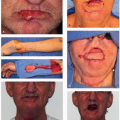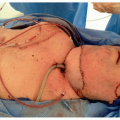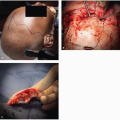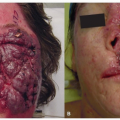The US Intergroup study was the first to demonstrate a survival advantage of adding concurrent cisplatin-based chemotherapy to RT over RT alone in a multicenter randomized study of patients most of whom had locoregionally advanced NPC.
69 In this study, 147 patients with nonmetastatic stage III to IV NPC were randomized to either RT alone or RT with three cycles of concurrent cisplatin followed by three cycles of adjuvant cisplatin and 5-flurouracil (5FU). Unlike NPC from endemic regions where nearly all of the cases were of the WHO type II and III histologic subtypes, around 20% of patients enrolled in this study had WHO type I (squamous) form of NPC. At a median follow-up of 2.7 years, the RT alone arm was associated with a hazard ratio (HR) of 4.34 (95% confidence interval, CI, 2.47 to 7.69) for progression and/or death and an HR of 2.50 (95% CI, 1.29 to 4.84) for death compared with the combined arm
(Table 11.4).
81,82,83,84,85 This landmark study did not immediately change clinical practice in Asia, as Asian investigators were eager to validate their result in local population where nearly all NPC were of the WHO type II to III histologic subtypes. Several multicenter randomized studies have been published since 2002 (
Table 11.4).
69,70,71,72,73,74,75,76,77,78,79,80 Six of the eight selected studies showed an OS advantage at 5 years,
69,71,75,79,86 with HRs of 0.51 at 3 years
75 and 0.54 to 0.71 at 5 years.
71,79,80 Of the six positive studies outlined in
Table 11.4, a variety of concurrent chemotherapy regimens were used, which included a weekly schedule of low-dose cisplatin,
71,79,80 3-weekly highdose cisplatin,
69,75 and a two-drug regimen such as cisplatin-FU.
86 The total doses of RT delivered in these studies were between 66 and 74 Gy (
Table 11.4).
71,79,86 In the phase III study by Chan et al.,
71,72 which used weekly concurrent cisplatin during RT, the HR was 0.71 (
p = 0.049) favoring the concurrent arm for the entire group of patients with stage II to IVB NPC, whereas the magnitude of benefit for the T3 to T4 subgroup
was higher with an HR of 0.51 (95% CI = 0.3 to 0.87,
p = 0.013). Some of the studies found an association between OS benefit with improvement in distant metastasis or with failure-free survival, thus further adding weight to the hypothesis that chemotherapy may improve survival by controlling micrometastases.
75,79,86



